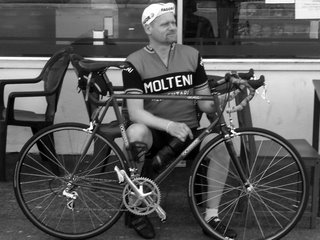I am (not) home.
For the past month or so, I have been pedaling my bike through the Rock and Wisconsin River watersheds once again. I know where I am, seem to know the people I walk by on the street, for their basic facial features are much like those of my own family. The black ash and Norway maple that line the streets here in Madison, Wisconsin formed the landscape of much of my youth. While I grew up on the other side the northern sub-continental divide in the Lake Superior Basin among sugar maples and the occasional remaining white pine, time in Eau Claire and Madison, and Milwaukee and Cleveland and Washington State, for that matter, set me on my path. While I came into myself along the waters that flow out the Montreal River into the big lake, it has been the Wisconsin and Cuyahoga, even more the Nooksack, Nisqually, but especially the Cedar-Sammamish and the Milwaukee that have brought me to where I am. A child of streams I could drink from, I am a person of polluted urban waters.
My path has circled back to the city where I first lived away from home, a place between the Northwoods and the city. Madison is, of course, not the place I remember. A two-decade consumer binge is everywhere visible here. The campus is more akin to what Mark Edmundson (1997) called “a retirement spread for the young” than to a land-grant college. Indeed, it is much easier to find a local restaurant on the UW homepage than to find the University mission statement. Still, the mission is compelling:
The primary purpose of the University of Wisconsin–Madison is to provide a learning environment in which faculty, staff and students can discover, examine critically, preserve and transmit the knowledge, wisdom and values that will help ensure the survival of this and future generations and improve the quality of life for all. The university seeks to help students to develop an understanding and appreciation for the complex cultural and physical worlds in which they live and to realize their highest potential of intellectual, physical and human development.
It also seeks to attract and serve students from diverse social, economic and ethnic backgrounds and to be sensitive and responsive to those groups which have been underserved by higher education.
The phrases that make a college work are here: “examine critically,” “knowledge, wisdom and values,” “quality of life for all,” “appreciation for . . . complex cultural and physical worlds,” “ intellectual, physical and human development,” “serve,” “underserved.” But it is a mission that has abandoned the land-grant context for one that is closer to an unabashedly self-interested culture. The Extension can take care of the state’s needs. The UW is a global brand and as such cannot be constrained by a mission that binds it to a lifeplace in any concrete ways. Like its sister institutions, the UW has given up on embodying the Morrill Act. That mission simply does not pay.
The mission of this place was revised in the late 1980s when I was last here. Oddly, the dissonance I feel in that mission is part of what has drawn me here. An educator, I have uncoupled myself from the role of teacher and come to study the context of U.S. classrooms. I am caught in Yi-Fu Tuan’s (1974) paradox of neighborhood: I can “recognize the extent and uniqueness” of the place of interest—the classroom—only by moving to adjacent places that let me look back at it, but by making this shift, I am less involved in the place of interest, less a neighbor. I need the distance for a time if I am to see more deeply what it means to compose college.
Fortunately, I have landed in a corner of the campus that will bind me to learners. My initial foothold in the UW is a project assistantship in the WIDA Consortium, a WCER project. WIDA aims at this mission:
To promote educational equity and academic achievement for linguistically and culturally diverse students through the development and dissemination of curricular, instructional, and assessment products and resources.
While this statement is as distant from the places of learning as the UW mission statement, there is a difference in its implementation. WIDA is a consortium; its members are bound by statute to pursue the needs of three-quarter of a million English language learners and their teachers. The products and resources that WIDA produces have to work in the classroom, have to facilitate access for English language learners or those products and resources are abandoned, in part because they will not sell. Working at WIDA, I will study how language learners gain access to school and the cultural, social, and economic capital that are accessed through school. Moving through the ELPA, I will imagine how college students gain access.
Place matters. I have a new one.
Friday, August 28, 2009
Subscribe to:
Posts (Atom)
